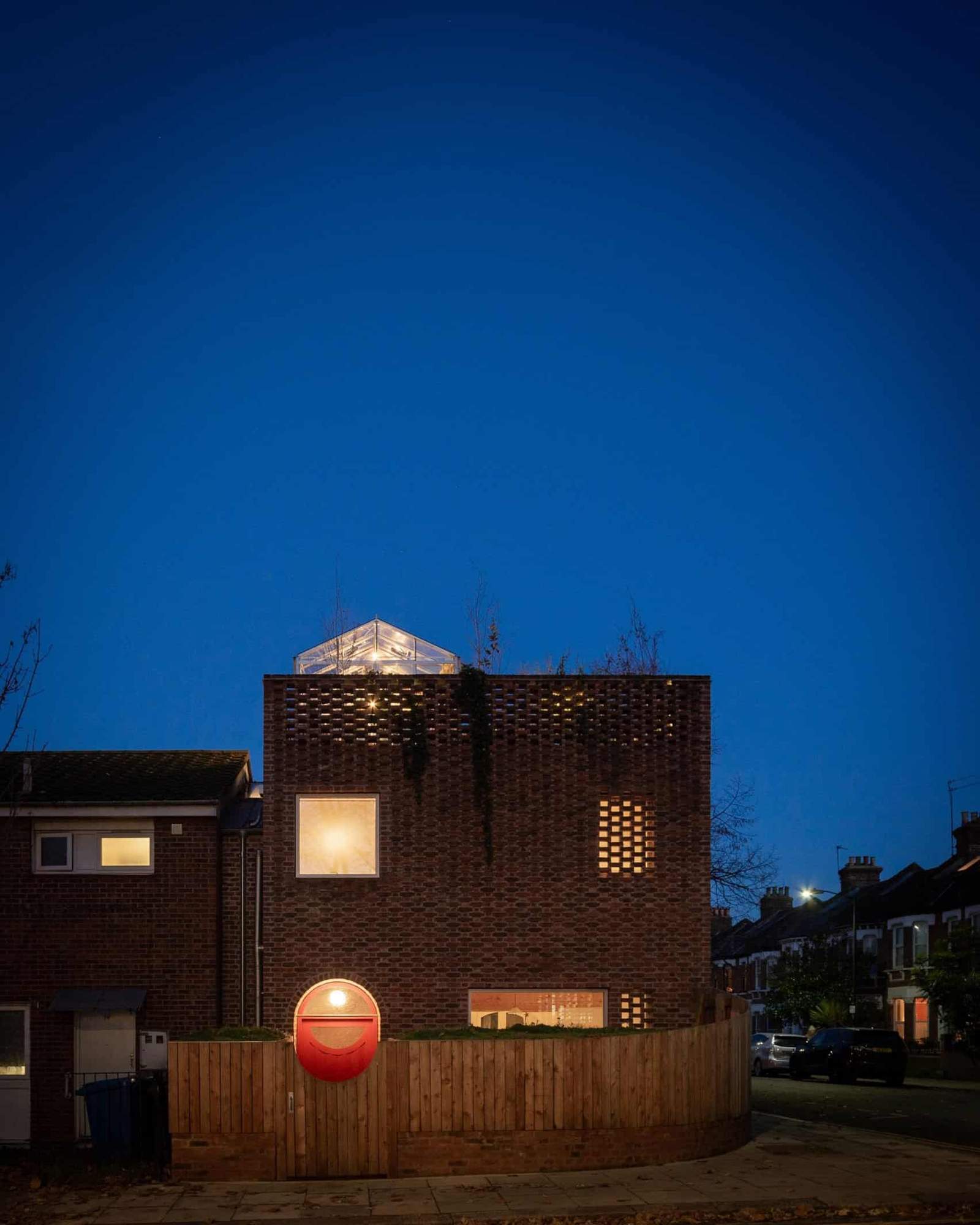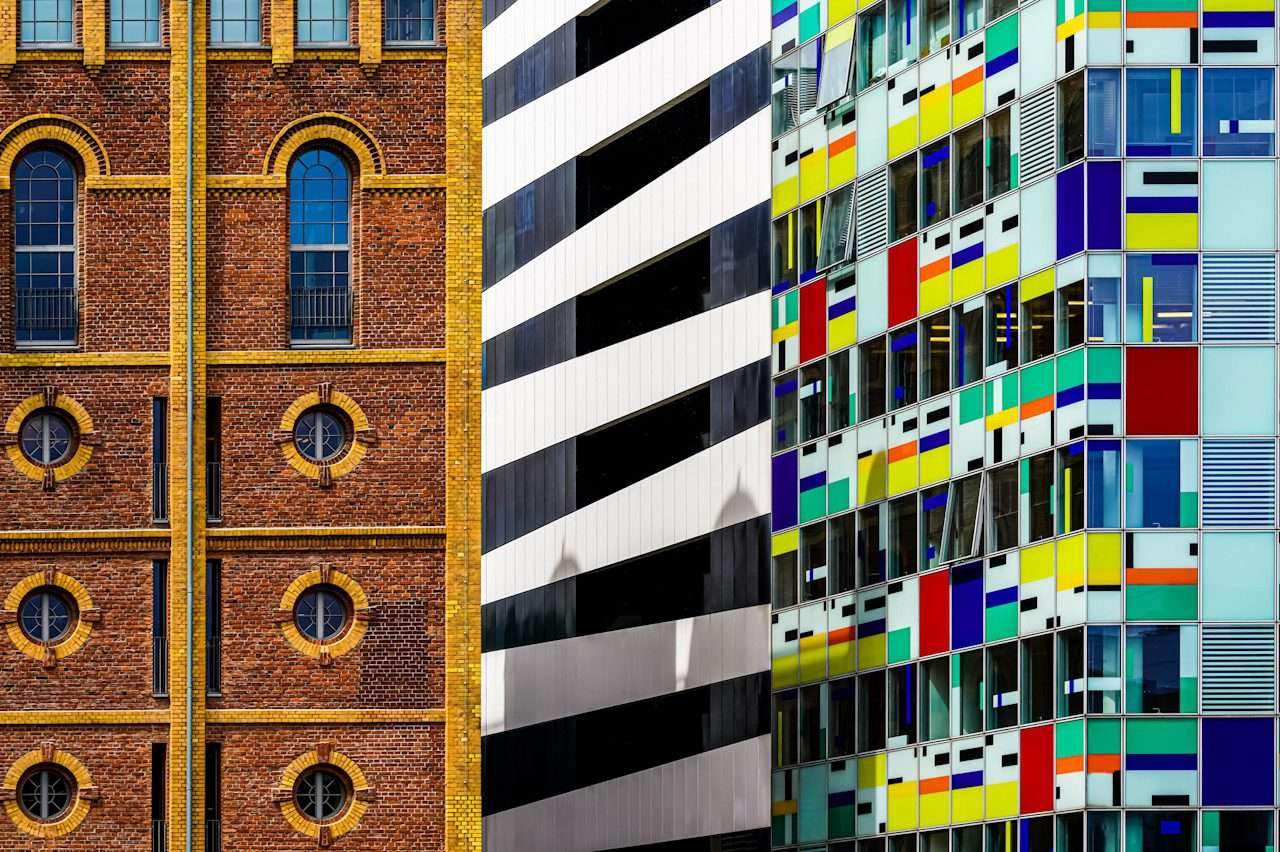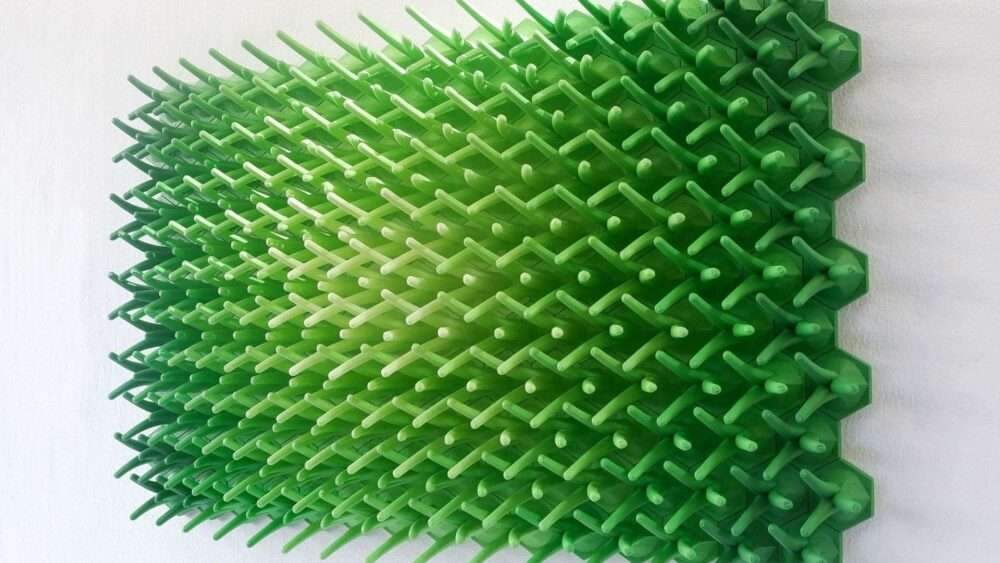Nestled in the vibrant neighborhood of Peckham in southeast London, Peckham House stands as a striking example of innovative architecture and self-expression. Designed and built by the talented duo of Tom Surman and Percy Weston from Surman Weston architecture studio, this self-build project is a testament to creativity and adaptability. Let’s delve deeper into the captivating features and thoughtful design principles that define Peckham House.
Embracing Context and Individuality
Peckham House emerges as a distinctive presence in its urban surroundings, characterized by its blocky form and animated hit-and-miss brickwork. Surman Weston drew inspiration from the diverse architectural styles of the neighborhood, aiming to create a structure that harmonizes with its context while asserting its individuality. The result is a monolithic cuboid adorned with decorative brickwork, paying homage to the surrounding built environment.
Integrating Nature and Green Spaces
Despite its urban setting, Peckham House is designed to embrace nature and promote biodiversity. The inclusion of three gardens—one at the front, one at the back, and another on the roof—adds a sense of lush greenery to the site. These green spaces not only enhance the aesthetic appeal of the residence but also contribute to its ecological sustainability. The rooftop garden, concealed from sight, serves as a multifunctional space for relaxation, dining, and even vegetable cultivation.
Innovative Structural Design
The structural design of Peckham House reflects a blend of pragmatism and sustainability. Constructed primarily from timber and Lignacite blockwork made of recycled aggregate, the residence prioritizes both durability and environmental responsibility. This choice of materials not only reduces the building’s embodied carbon but also utilizes the thermal mass of the blockwork for enhanced energy efficiency. The timber structure is expressed throughout the interior, creating a warm and inviting atmosphere.
Thoughtful Interior Details
Inside Peckham House, every detail is carefully considered to create a cohesive and inviting living environment. The open-plan layout on the ground floor seamlessly integrates the living, kitchen, and dining areas, fostering a sense of connectivity and flow. The juxtaposition of blockwork walls, lime plaster, and timber joists adds texture and visual interest to the interior spaces. Thus, creating a rich tapestry of materials. Bespoke elements, such as the aluminium shelving system and arched doorways crafted by joiner Tim Gaudin, further enhance the uniqueness of the residence.
Self-Build Process and Architectural Evolution
The self-build process of Peckham House was both challenging and rewarding for Surman Weston. Without the constraints of a client brief, the architects were able to explore their creativity freely. Resulting in a project that truly reflects their interests and personalities. The iterative nature of self-build projects allowed for constant refinement and adaptation, ultimately enriching their skills and architectural sensibilities. Despite the complexities and stresses inherent in the process, Surman Weston views the experience as transformative. Therefore, shaping their practice and making them better architects.
Conclusion: A Testament to Creativity and Collaboration
In conclusion, Peckham House stands as a testament to the power of creativity, collaboration, and architectural innovation. Surman Weston’s thoughtful design approach, rooted in context and sustainability, has resulted in a residence that not only responds to its surroundings. But also pushes the boundaries of traditional design conventions. As a self-build project, Peckham House embodies the spirit of experimentation and exploration, showcasing the endless possibilities of architectural self-expression.
Peckham House serves as a beacon of inspiration for architects and homeowners alike, demonstrating the transformative potential of thoughtful design and collaborative construction processes. By embracing context, integrating nature, and prioritizing sustainability, Surman Weston has created a residence that not only meets the needs of its occupants but also enriches the fabric of its urban environment. In a rapidly evolving architectural landscape, Peckham House stands as a testament to the enduring value of creativity, innovation, and craftsmanship.
Finally, find out more on ArchUp:











